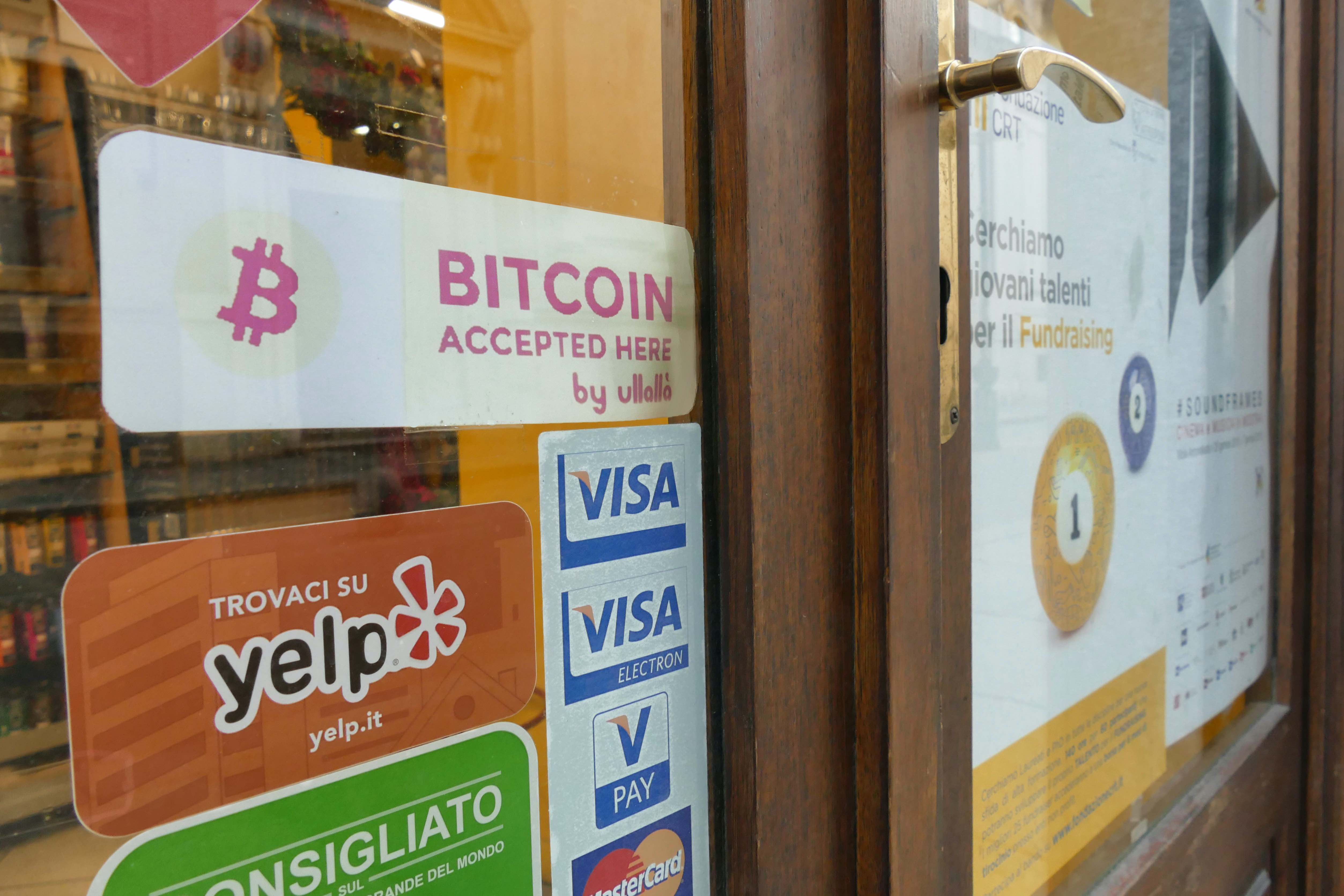Does Bitcoin need retailer adoption?

What is cryptocurrency for? Is it a medium of exchange? Is it a store of value? Is it one of the myriad other applications proposed across research papers and internet forums alike?

If we assume that BTC is destined to replace traditional currency as a medium of exchange, retailer adoption is clearly important. In a recent article, Crowdfunder Insider, an information hub for emerging disruptive tech, goes as far as to say that crypto adoption will be driven by retailers rather than the other way around, explaining: “Historically, merchants acted as gatekeepers for new payment technologies. When credit cards and debit cards first began circulating, retail adoption drove consumer confidence and led to their widespread ubiquity.”
The demand from consumers certainly seems to be there. “Monthly payments for goods and services in Bitcoin increased from 9.2 million to 190.2 million from 2013 to 2017, a 2000% jump,” according to Crowdfunder. Our own research supports this. When we asked our community whether they’d pay for goods and services using crypto given the option, just over 80% of 435 respondents said yes.
If you had the choice, would you pay for goods or services using #cryptocurrency? ??
— Luno (@lunomoney) May 14, 2020
And it appears merchants recognise this. In 2017 alone, the number of retailers accepting crypto-payments rose by 30%. Today, BTC is accepted as payment by major retailers spanning a diverse array of industries, including Subway, Whole Foods, and Nordstrom, among others. But the numbers are still small. So what will it take to change?
Why should merchants look to crypto?
For retailers, the benefits of offering crypto as a payment method aren’t just limited to satisfying consumer demand. They’re also able to exploit the increased security and privacy protocols inherent in blockchain technology; instant and verified transactions; protection from fraudulent chargebacks; reduced transaction fees due to limited interaction with money-guzzling third-parties; a borderless customer base with no need for cross-border banking.
Chargebacks, for example, are a serious concern for merchants. They have the potential to drastically threaten a merchants’ reputation and, in turn, the bank accounts they use for their business. Chargebacks were initially designed as a consumer protection mechanism to refund customers who report suspicious fees or transaction amounts when interacting with brick-and-mortar and online shopping sites.
Unfortunately, they’ve begun to have an increasingly adverse effect on merchants who find themselves victims of “friendly fraud”. Friendly fraud occurs when a customer files a chargeback instead of first trying to obtain a refund from the merchant. Chargebacks911 found that 86% of all chargebacks are probable cases of friendly fraud, which reportedly increases by 41% every two years.
According to Chargeback Gurus, “chargeback fees tend to range from $20 to $100”. It also mentions an array of other costs merchant’s could encounter when dealing with chargebacks. In an experiment, they estimate a chargeback on a $100 purchase could end up costing the merchant $207. The inherent immutability of blockchain technology means transactions made using crypto are final for the merchant, eliminating chargeback fraud and potentially saving them millions.
For consumers, the benefits of using crypto for retail purchases include increased privacy and better interoperability. While lower fees are a potential benefit, it’s highly dependent on average Bitcoin network fees at the time of a transaction. For consumers purchasing expensive luxury products or flight tickets with crypto, any bank-related hassles and potential currency instability would be alleviated. Additionally, the blockchain’s immutable nature means consumers would be protected against any payment disputes levelled against them.
Current adoption levels
Despite consumer demand and some big names beginning to accept crypto, merchants are largely behind the curve when it comes to adoption. A 2020 survey by HSB revealed that 36% of small-medium businesses in the US accept Bitcoin. This is impressive given how long Bitcoin has been around, but it means there’s plenty of room for growth.
There are a number of reasons for merchants to shy away from crypto as a form of payment. Research agency Panteia conducted a survey in 2018 focused on 768 online retailers based in the Netherlands. Out of the 768 retailers, only 43 said they accept crypto payments. The most often cited reason for this Unfamiliarity with crypto is the most cited reason for non-acceptance at 58%. Following this, lack of consumer demand (36%), “not feeling the need to accept it” (17%), and a lack of trust in crypto (16%) make up the majority of the other reasons retailers choose not to add crypto as payment method. The research highlights “Overall, both the answers given by accepting and non-accepting retailers indicate that customers’ (expected) demand for crypto influences the acceptance decision.”
But the future is bright. Retailers who do accept crypto indicated that their customers are mainly below the age of 30, suggesting that they’re aware that’s where the market is. Additionally, retailers operating in “media” or “electronics” have a significantly more positive attitude towards crypto adoption than those active in other sectors.
What’s hodling crypto back?
There are a number of other challenges crypto as an industry needs to overcome before we see mass adoption by retailers. Crowdfunder Insider said: “Cryptocurrencies still struggle with being seen as “fake” money, exacerbated by boom and bust headlines and regulatory uncertainty. The fastest path to legitimacy? Bringing cryptocurrency into retail, in a meaningful, visible way.”
According to research by Visual Capitalist, the three major challenges to Bitcoin payments are:
1. Price volatility: “In 2017 alone, the Bitcoin price fluctuated between $1,000 and $20,000. Big swings in price make it unattractive for day-to-day transactions.”
2. Slow transaction times: “The average confirmation for Bitcoin takes about 10 minutes per transaction right now.”
3. High transaction fees: “The average transaction costs around $1 right now.” Importantly, Bitcoin transaction fees tend to vary depending on a number of variables. Regardless, and especially for larger transactions, Bitcoin has remained a frontrunner for the cheapest option.
Although Bitcoin has matured, so to speak, its volatility in particular still remains a contentious issue. It’s understandable that retailers and merchants would prefer a risk-averse approach when it comes to their profitability.
In terms of fees, it doesn’t appear there is a case to be answered. According to Digital Commerce 360, “PayPal is the fifth most popular payment method retailers accept.” Visa, MasterCard, American Express and Discover Card round out the group, respectively. The payment giant, owned by eBay, is available in more than 200 markets around the world. However, PayPal not only charges a percentage on money received, it also charges relatively high fees (~3%) for every transaction. For payments outside of the US, these fees can be astronomical. So why do more retailers prefer payment options like PayPal rather than Bitcoin?
Overcoming the hurdles
The barriers between retailers and crypto acceptance can and will be overcome. We’re witnessing rapid improvements in crypto interoperability and transaction times that could significantly drive Bitcoin towards the mainstream market.
It’s important to remember that blockchain technology and cryptocurrencies are still relatively new, especially compared to the monolithic banking and finance industry. The cryptocurrency and payments sector is constantly developing and addressing any issues. For example, the advent of the Lighting Network has helped to cut transaction times.
There has also been an influx of reliable payment service providers (PSPs) to help to manage risks arising from Bitcoin’s volatility that merchants could be exposed to. Companies like Bitpay, for example, claim to shield retailers from volatility by automatically converting the paid crypto amount into a local currency one business day after the purchase is made.
As Crowdfunder Insider notes, “Retail provides one of the most efficient points-of-access for the everyday consumer to witness the viability and appeal of digital currencies.” Working on payment solutions that are focused on ease, reduced risk and reduced fees are what will propel crypto into mainstream markets. As we further move away from physical cash, a younger generation of consumers emerges that’s more accustomed to cryptocurrency, and more companies arise offering payment solutions using crypto, it will be interesting to see how retailers respond. But the future is bright.
Keep reading…
Luno’s view on the regulation of cryptocurrency
 Discover
Discover Help Centre
Help Centre Status
Status Company
Company Careers
Careers Press
Press


